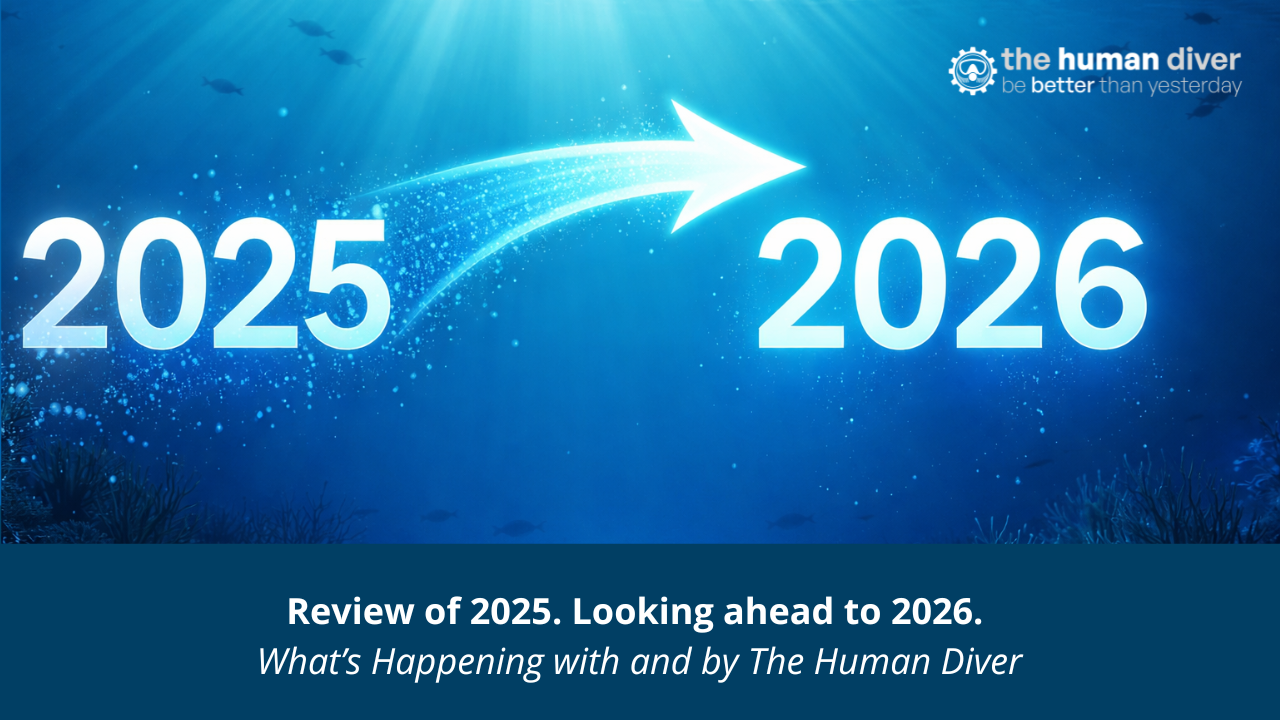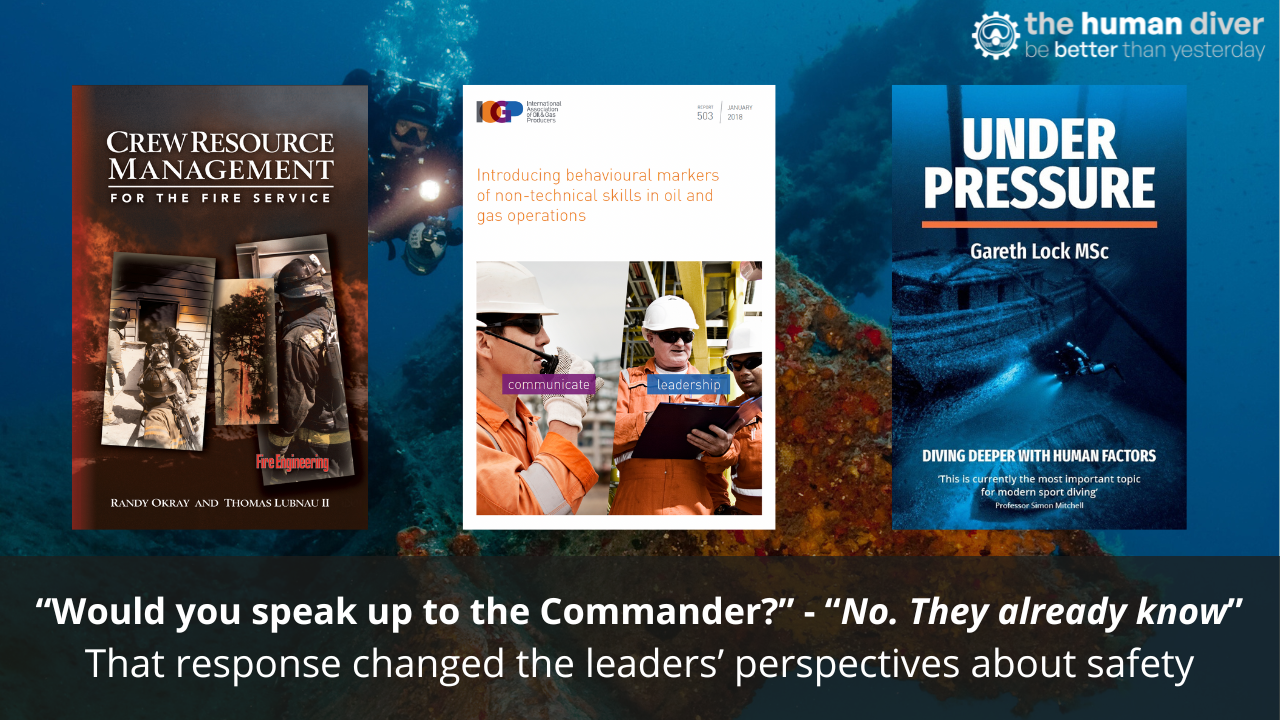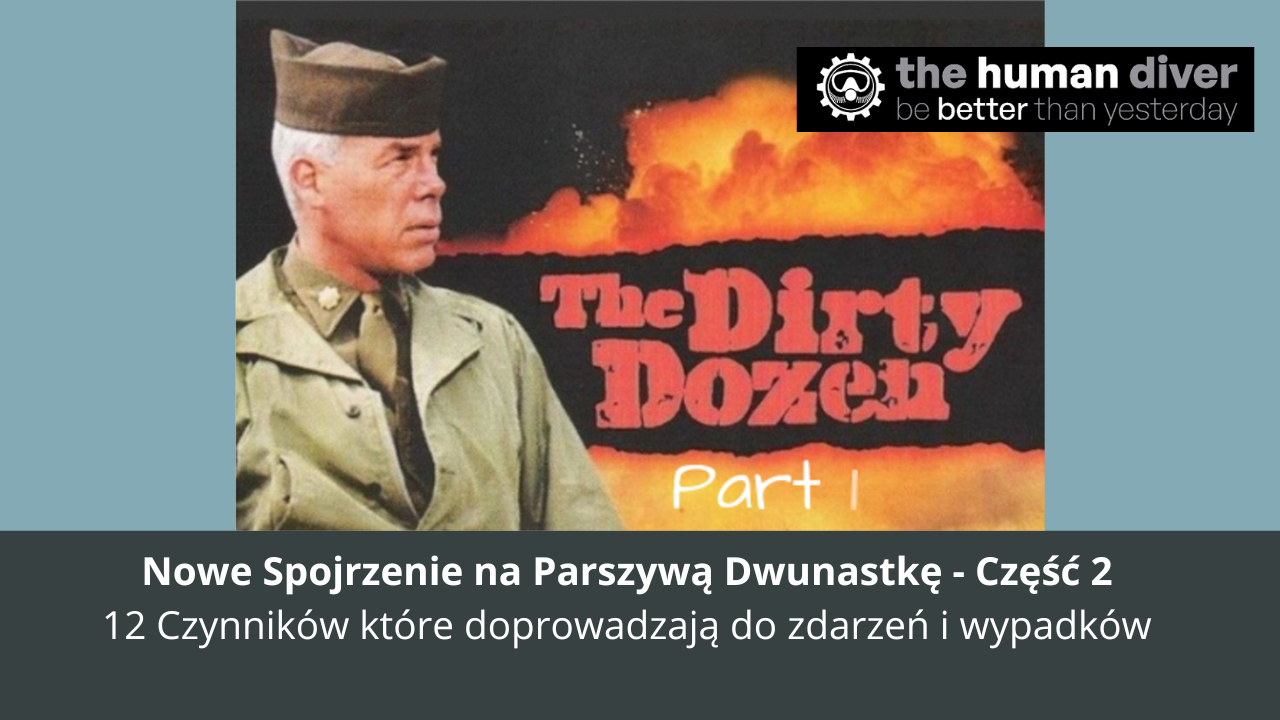
The Good, the Bad and the Ugly- learning from achievements, challenges and mistakes
Aug 09, 2023We all make mistakes, all the time. Most of the time they’ll be so small and insignificant we don’t even notice, or we correct them so quickly we wouldn’t consider them to be mistakes. But mistakes are an important way of learning and improving. If we can be made aware of them (in the right way- more on that in a bit), they can actually be beneficial to us.
I’d like you to think about when you learnt to dive. For some of you that may be many years ago, some will be just starting out. Either way, we all have the same obstacles we need to get over, namely that being underwater is not our natural environment. We need unfamiliar equipment to be able to breathe and need to learn new ways to move. When we start to learn buoyancy control, it’s a totally new process. Same as when we learn to ride a bike and need to balance it, we have to balance the gas in our BCD, lungs and perhaps drysuit in order to stay neutrally buoyant. This is a process we need to learn by doing, we have to get a feel of how much to inflate or deflate, breathe in or breathe out in order to stay in midwater. Undoubtedly we won’t get it right the first time. We’ll put too much gas in the BCD, or breathe in a larger breath than before and find ourselves moving up. So to correct we dump some air but likely at first we’ll dump too much or not enough and not end up where we want to be. After a bit of trial and error, we start to get the hang of it. Trial….and error. We naturally make mistakes in this process but that is what helps us to get it right.
AI uses the same process. This video shows some robots learning to play football. The researchers are introducing errors in order for them to learn how to balance themselves and how to pick themselves up when they fall. Over time, they start to learn how to stop this from happening and their balance (and therefore ability) improves.
https://www.youtube.com/watch?v=tZjQwZNw2po
As much as making mistakes is important, so is correcting those mistakes. Unless we realise what we did, we’re unlikely to repeat that in the future, meaning if we make the same mistake again, we may not correct it. This is where debriefs come in. A debrief is a way of making us aware of mistakes we made but also of how we corrected them. If we didn’t correct them, a debrief is a good time to think through how we would correct them if we made the same mistake again or if we don’t know, then to highlight that gap in our knowledge and train, study or get instruction on how to fix it in the future.
But debriefs shouldn’t focus only on mistakes. We also need to look at the good- what went well. I had a student recently who, at the end of the first dive as we were about to begin the debrief said “Ok, let’s start the roasting”. This told me a lot about the types of “debriefs” he’s heard in the past. I often hear debriefs that are just a list of things the student did wrong, sometimes without even explaining how they can improve. This is a pointless debrief, a student doesn’t know what they don’t know, and without guidance won’t be able to change. By following the DEBrIEF model, my student told me about his dive, explained what he struggled with and also what he thought he did well. We discussed ways to improve the things he needed to work on and we discussed the reasons for the successes that were achieved. This reinforced the good things and helped him to remember to continue doing them in the future.

That covers the good and bad but what about the ugly? As Gareth discussed in these blogs:
https://www.thehumandiver.com/blog/counter-factuals Why ‘They should have’, ‘...could have’ or ‘I would have..’ do not improve diving safety
https://www.thehumandiver.com/blog/its-obvious-why-it-happened It’s obvious why it happened!! (In hindsight)
we can learn a lot from accidents and incidents if we approach them from a learning perspective. When something has gone wrong we need to work out how to prevent it from happening again; this will help more people than just looking to assign blame. That’s not to say no one is at fault, we just need to consider that there are different ways of investigating incidents and if we want to learn we need to approach that in another way.
Summary
Following a model (such as the one above) to structure debriefs will help keep us on track and focused. Remembering to look at both the things that went well as well as the things that didn’t are important for learning, so long as we consider why those things went well (so we know how to reproduce them) and how to improve things that didn’t (to build on and learn from any mistakes). If things have gone very wrong then approaching a debrief or investigation with a learning mindset will benefit the team if similar conditions happen in the future.
References:
The positivity effect: a negativity bias in youth fades with age. Laura L Carstensen and Marguerite DeLiema https://www.ncbi.nlm.nih.gov/pmc/articles/PMC6186441/

Jenny is a full-time technical diving instructor and safety diver. Prior to diving, she worked in outdoor education for 10 years teaching rock climbing, white water kayaking and canoeing, sailing, skiing, caving and cycling, among other sports. Her interest in team development started with outdoor education, using it as a tool to help people learn more about communication, planning and teamwork.
Since 2009 she has lived in Dahab, Egypt teaching SCUBA diving. She is now a technical instructor trainer for TDI, advanced trimix instructor, advanced mixed gas CCR diver and helitrox CCR instructor.
Jenny has supported a number of deep dives as part of H2O divers dive team and works as a safety diver in the media industry.
If you'd like to deepen your diving experience, consider taking the online introduction course which will change your attitude towards diving because safety is your perception, visit the website.
Want to learn more about this article or have questions? Contact us.










